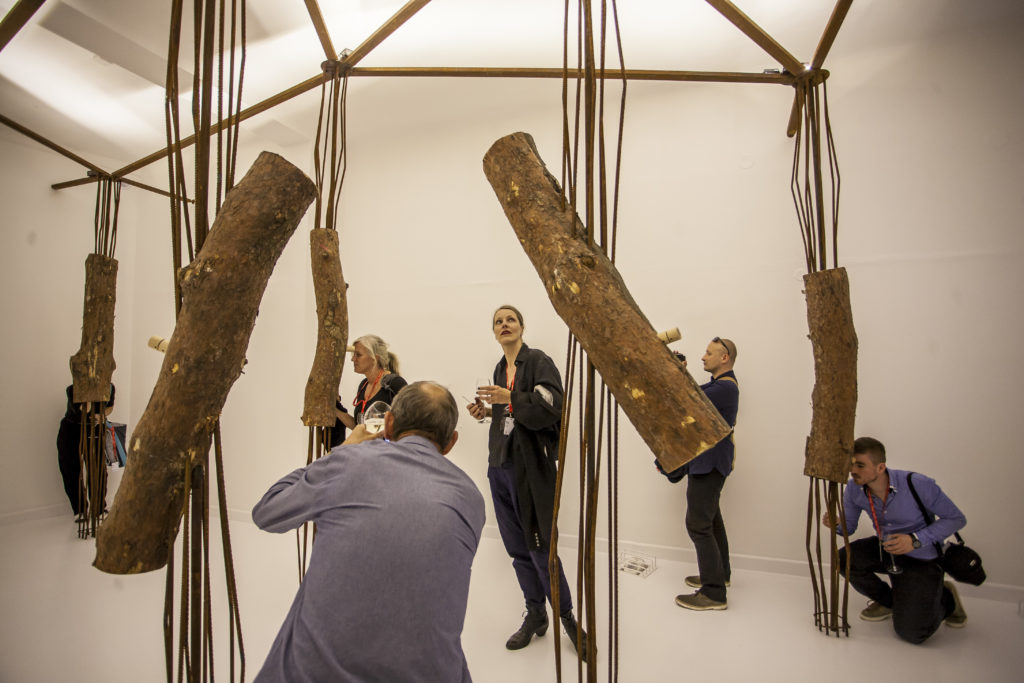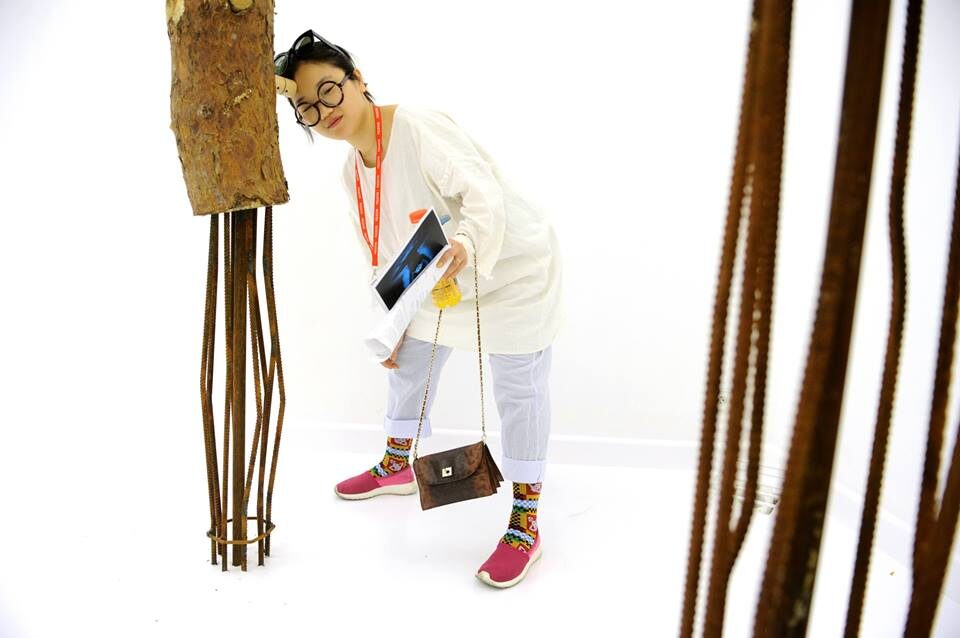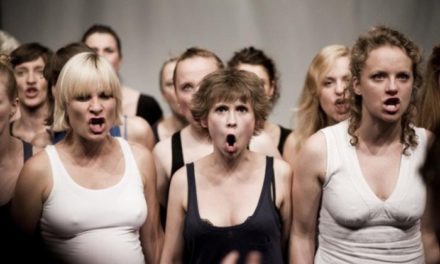The interactive installation Post-Apocalypsis was designed as part of the Polish pavilion at the Prague Quadrennial of Performance Design and Space in 2015. The project was curated by Agnieszka Jelewska, who invited Michał Krawczak, Paweł Janicki, Rafał Zapała, Michał Cichy, and Jerzy Gurawski to join the work. The installation was awarded the Golden Medal for sound design.
The concept of the Post-Apocalypsis installation not only fulfills the principle of the transdisciplinary creative process but is also inspired by ecological thinking about the relationships between human beings, so-called nature, and technology. Work on the installation was team-based: each participant, bringing his or her artistic competencies or knowledge, was at the same time ready to negotiate to reach common ground.
The Experience

Post-Apocalypsis, Photograph by HAT Center
Visitors to the installation enter a bright, white space filled with light. In the center are technologically modified trees. The first level of hearing employs dynamic sound, which surrounds everyone in the room. The loud sound is a musical structure based on the sonification of weather data; participants can choose a data location from screens (Chernobyl, Fukushima, Los Alamos, and others). The second level of hearing is the strange sonic experience of bone-conductor interfaces placed on trees. After placing one’s head against the interfaces, visitors begin hearing voices not through their ears, but “inside the head,” still hearing a messy weather soundscape from the outside.
The Post-Apocalypsis installation projects a precise contemporary vision of the networked and global world. Visitors enter directly into a condensed space of real-time weather-data streams, including from places of energy-related threats and disasters on Earth. Through bone-conductor interfaces, they can hear fragments of Polish classical romantic texts read by a lector with aphasia (a communication disorder). In the interaction that the exhibition assumes, a new understanding of technology is also revealed. Commonly defined in the romantic approach as an antinomy to “nature,” it becomes a part of “nature” in the installation, forming with it and the visitors a hybrid communication ecosystem.
In Post-Apocalypsis, we are faced with the contemporary human treated as an actor acting from the perspective of Earthly responsibility and becoming a part of energy-biological-geological dark ecological loops. A sign of this is the human’s presence, cognitive decisions, ways of moving and interaction during the exhibition, which impact and alter the entire atmosphere of the installation, as in the real global experience of a dynamic weather condition, which must today be understood as a concurrence of “natural” phenomena and of social, political, and economic anxiety. This is why the performance of “life” takes place ceaselessly in technologically mediated global systems, tying together the human and the non-human in the situation of an apocalypse that is, in fact, an immanent premonition of the contemporary. Weather conditions experienced in such a way intertwine atmospheric data with political processes and natural disasters with wars.
In 2016 the Dæd Baitz group (Agnieszka Jelewska, Michał Krawczak, Paweł Janicki, Rafał Zapała, Michał Cichy) decided to destroy the Post-Apocalypsis installation. All parts, including the electronics, were compacted in a scrap yard. During this process, an art video, Crash Test, was shot. Remains of the installation also became a starting point for a new ongoing group project, Arthropocene.
This post was written by the author in their personal capacity.The opinions expressed in this article are the author’s own and do not reflect the view of The Theatre Times, their staff or collaborators.
This post was written by Michał Krawczak.
The views expressed here belong to the author and do not necessarily reflect our views and opinions.


















